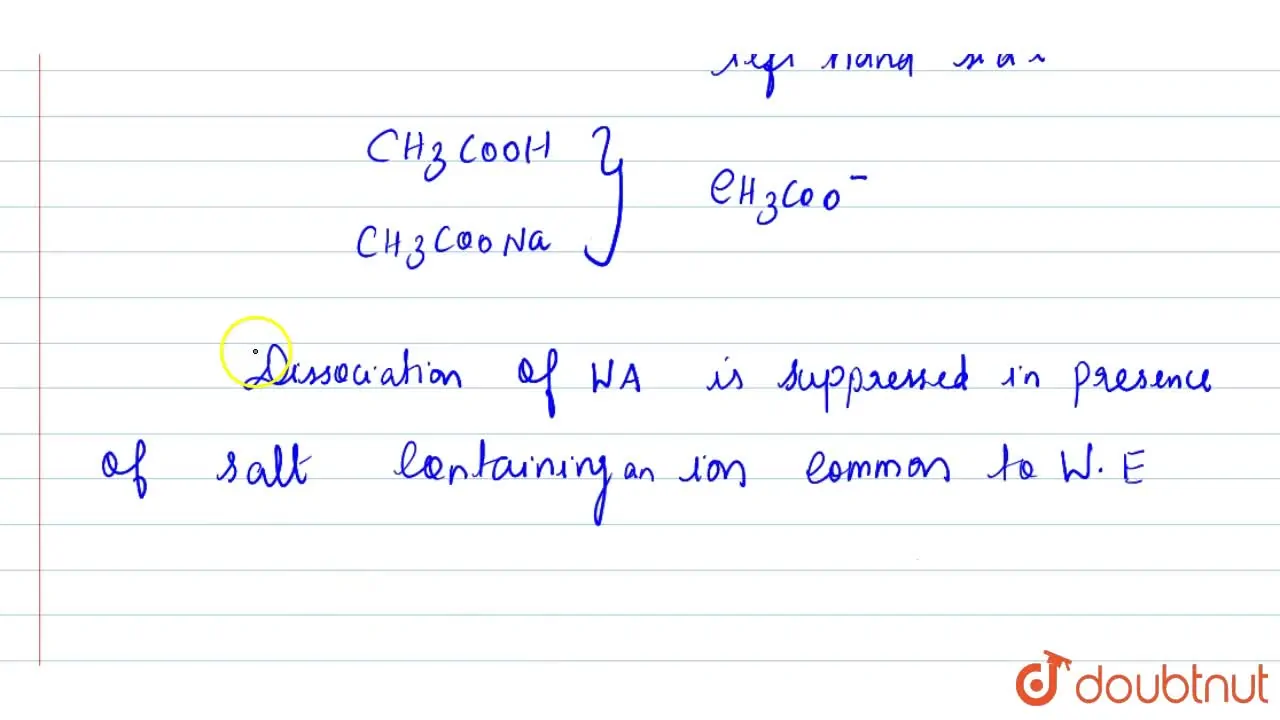Explain common ion effect with an example.Solution in Tamil
The dissociation of a week acid (CH3COOH) is suppressed in the presence of a salt (CH3COONa) containing an ion common to the weak electrolyte. It is called the common ion effect.
Eg: Acetic acids is a weak acid. It is not completely dissociated in aqueous solution and hence the following equilibrium exists.
CH3COOH(aq)⇔H+(aq)+CH3COO((aq))
However, the added salt, sodium acetate, completely dissociates to produce Na+ and CH3COO−ion.
CH−3COONa(aq)→Na+(aq)+CH3COO−(aq)
Hence, the overall concentration of CH3COO− is increased , and the acid dissociation equilibrium is disturbed. According to Le chatelier's principle, the excess CH3COO− ions combines with H+ ions to produce much more unionized CH3COOH i.e., the equilibrium will shift towards the left. In other words, the dissociation of CH3COOH is suppressed.
Related Playlists
- BOOK - SURA PUBLICATIONCHAPTER - IONIC EQUILIBRIUMEXERCISE - EXERCISE (EVALUATE YOURSELF)19videos
IONIC EQUILIBRIUM
- BOOK - SURA PUBLICATIONCHAPTER - IONIC EQUILIBRIUMEXERCISE - MCQs (ADDITIONAL QUESTIONS AND ANSWERS)36videos
IONIC EQUILIBRIUM
- BOOK - SURA PUBLICATIONCHAPTER - IONIC EQUILIBRIUMEXERCISE - EXERCISE (LOGN ANSWER)1videos
IONIC EQUILIBRIUM
- BOOK - SURA PUBLICATIONCHAPTER - HYDROXY COMPOUNDS AND ETHERS EXERCISE - UNIT TEST (LONG ANSWER)1videos
HYDROXY COMPOUNDS AND ETHERS
- BOOK - SURA PUBLICATIONCHAPTER - MATALLURGYEXERCISE - Unite test (IV. Long Answer)1videos
MATALLURGY
Similar Questions
Classify the following as acid (or) base using Arrhenius concept
(i)HNO3
(ii)Ba(OH)2
(iii)H3PO4
(iv)CH3COOH02:07View SolutionWhich one among the following in the strongest Bronsted base.
05:39View SolutionState Ostwald’s dilution law.
02:02View SolutionHow will you distinguish the primary, secondary and tertiary alcohols by Victor Meyer’s method ?
04:32View SolutionGive the limitations of Ellingham diagram.
05:39View SolutionWhich is not an example of common ion effect ?
View SolutionExplain common ion effect with an example.
02:57View SolutionWhat is common ion effect? Give an example.
04:42View SolutionWhat is common ion effect? Cite an example.
View SolutionExplain common ion effect with an example.
View SolutionExplain common ion effect with an example.
07:19View SolutionWhat is common ion effect. Give examples.
06:05View SolutionBriefly explain the terms ‘Common ion effect’ .
04:41View SolutionDerive defination and explain common ion effect by example .
08:04View SolutionExplain the uses of common ion effect.
03:10View Solution


